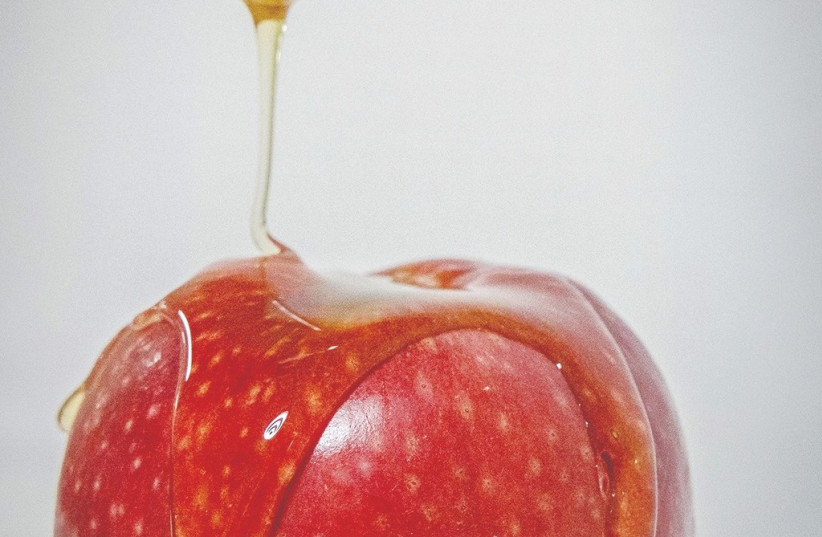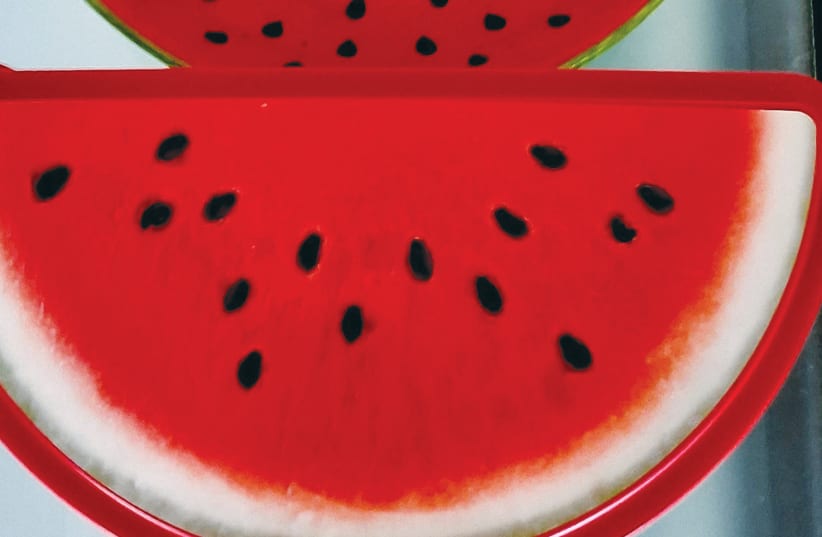Rosh Hashanah, the Jewish New Year, is a time of reflection, prayer, and celebration. Among its many traditions, the consumption of special foods on the first night of the festival, known as simanim (signs or symbols) holds a significant place. These symbolic foods, each associated with a specific statement of yehi ratzon, meaning “may it be Your will, Hashem,” is then followed by a specific wish for the coming year, often based on a play on words.
Many of these simanim hold positive associations, such as the wish after eating pomegranate that our merits should increase like the numerous seeds of the fruit. The pomegranate’s vibrant red color also represents the richness of life and the intensity of our prayers.However, some also carry negative connotations. For example, beets (selek in Hebrew) is connected with the Hebrew word to disappear, so we eat a piece of beet and wish for our enemies to disappear. In recent times, there has been a growing sentiment to replace the negative simanim with more positive alternatives, fostering an atmosphere of hope, unity, and understanding, rather than negativity and looking over our shoulders at those who wish to harm us.

One of the most iconic and widely practiced simanim is the dipping of apples in honey. This cherished custom is often accompanied by the melodic voices of children singing, “Dip the apple in the honey, make a Bracha loud and clear, leshana tova umetukah, may we have a sweet new year.” This simple act, which we all learned in kindergarten, encapsulates the heartfelt wishes for a year filled with sweetness, joy, and prosperity. The apple, representing life and vitality, signifies hope for a fresh start, while honey, the epitome of sweetness, symbolizes the desire for a year overflowing with blessings.
Beyond the apple and honey, Rosh Hashanah simanim extend to other fruits as well.Dates, too, find their place on the Rosh Hashanah table. The traditional wish when we eat the date is that those who hate us should be consumed – again a negative thought.
Maybe we should find a different wish for this siman, perhaps we could consider that, much like the fruit’s sweetness hides the pit at its core, we have a subtle reminder that as we seek blessings for the upcoming year, we also acknowledge the challenges we face.While these traditional simanim carry deep significance, particularly in a historical context of thousands of years of persecution, there is a growing sentiment that the negativity associated with some of them may not align with the spirit of hope and renewal that Rosh Hashanah embodies in our modern lives, particularly since we are now blessed to have returned to our own Homeland. Instead of focusing on the demise of enemies, why not include more of the positive and meaningful simanim that foster unity, growth, and understanding.Consider the watermelon as a potential addition to the simanim table.Watermelon’s sweetness is directly linked to the rainfall it receives during its growth. This makes it a perfect symbol for the dependency on nature’s blessings, and by extension, the divine blessings that are sought for the coming year.Including watermelon could serve as a reminder of our interconnectedness with the world around us and our reliance on forces beyond our control.And one for the kids (or the kid inside all of us) – “jelly beans.” While not a traditional Rosh Hashanah food, the Hebrew word for understanding is binah. By adding jelly beans to the simanim, we would be symbolizing our yearning for greater insight, wisdom, and understanding in the coming year. This aligns well with the theme of introspection and growth that Rosh Hashanah encourages. (They also taste good!)
The idea of replacing negative simanim with more positive and aspirational alternatives speaks to the evolving nature of tradition. Traditions hold immense value in connecting us to our heritage and guiding our actions, but they are not set in stone. They can adapt and evolve to better reflect the values and intentions of the community they serve. By embracing positive simanim that promote unity, empathy, and personal growth, Rosh Hashanah can become an even more transformative and meaningful experience.So, Rosh Hashanah’s simanim carry a rich tapestry of meanings and hopes for the year ahead. While the traditional simanim hold great significance, there is room for the inclusion of more positive symbols that better align with the themes of unity, growth, and understanding. The cherished apple and honey can continue to grace our tables, reminding us of the sweetness we desire in life.Pomegranates and dates can also find their place, evoking the aspirations for multiplied merits and the acknowledgment of challenges. And by adding watermelon and “jelly beans” to the mix, we can bring a fresh perspective that fosters blessings and the wisdom to use those blessings for the good of society, and a deeper connection to the essence of Rosh Hashanah. Just as the new year offers a chance for renewal, so too can our traditions evolve to reflect our ever-changing aspirations for a better world.The writer, a rabbi, lives in Ramat Poleg, Netanya, and is a cofounder of Techelet – Inspiring Judaism.